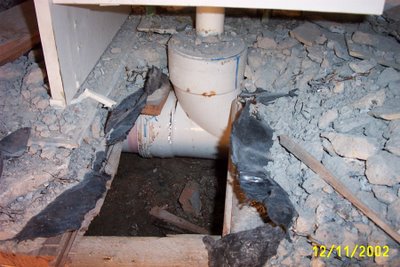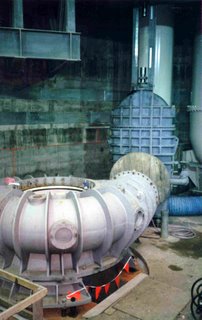Wenning Technical Services is an environmental plumbing consulting business specialising in water, wastewater and solar hot water. We meet and exceed client expectations with sustainable plumbing solutions. This is achieved by analysing the current and future needs of the client, bringing experience and technical expertise to develop solutions that are:
- Socially and environmentally responsible
- Financially beneficial
- Low maintenance and durable
- Adaptable and flexible
Two Sample Projects
KCC Park – Skye
Six years ago, the Victorian Canine Association (VCA) Office relocated from the Royal Melbourne Showgrounds to KCC Park, a 30 hectare site on the Westernport Highway, Skye. Water was being delivered to the site by water truck, which was expensive and inefficient.
Various alternative water source options were examined including rainwater harvesting from the main pavilion roof, and bore water. In anticipating a significant increase in public traffic to the site, and also finding that the ground soil had moderate levels of salt and high sodium, there were two important considerations. Firstly, delivery of a predictable safe potable water supply, and secondly reduction of sodium levels to provide better conditions for growth of grasses.
A development plan for KCC Park included full development of the site with new competition, lure racing, lure and herding areas, a dog park and endurance track. Planting of grasses, trees and shrubs would be required, and the salt and sodium levels in the soil would need to be reduced and controlled to enable establishment and growth.
Through project management and negotiations with South East Water, a 150 mm PVC 1.6 kilometre water main extension was constructed and connected to KCC Park. The pipeline was constructed to South East Water and WSAA standards. South East Water then contributed $56,000 (50%) to the construction and then adopted the pipeline as their asset.
Within KCC Park, the old pump system was decommissioned, and the new potable water supply was connected to the existing plumbing.
Three years after completion of this pipeline, thousands of visitors to the site on any weekend have safe potable drinking water. The cost savings are around 80% on delivery of water by truck, and the VCA investment in the project has already been returned in savings. The VCA no longer pumps water and this reduces greenhouse emissions, and maintenance costs.
The VCA has now connected Class A Recycled Water to KCC Park from the Eastern Irrigation Scheme. Low cost, nutrient rich recycled water will be used to further develop the site and enable growth of a variety of grasses and plants. This will also reduce consumption of potable water at the site and assist in achieving the government’s goals of reducing water consumption, and 20% of water recycling by 2010.
Patterson River Secondary College – Patterson Lakes
Patterson River Secondary College has a playing field with a dry hard surface in need of an effective irrigation solution.
A solution was needed that would pay for an irrigation system, save water and educate students on the social responsibility and benefits of saving water. An examination of funding opportunities produced the solution.
It was decided to apply for a Community Water Grant. The water savings and community benefits of our project would need to be identified to satisfy the grant criteria. Two areas were identified.
The first area was installation of a water efficient irrigation system for the playing field. Four manually placed hose and sprinkler systems were being used to water the fields and this was ineffective and inefficient. A new automatic system watering at night would reduce evaporation and optimise water penetration to the grass root zone improving the playing field surface.
The second area was in outcomes arising from education of students on the social responsibility and benefits of saving water. A building upgrade (already funded) would replace existing inefficient plumbing with WELS compliant 4.5/3 litre dual flush cisterns and tapware, saving a significant volume of water. The benefits of the building upgrade and new irrigation system would be measured by installing sub water meters.
It was estimated that the water use in the toilet areas will be reduced by around 50% (approx 25% of the total water use). This would be measured through meter readings before and after the new building upgrade, and this project information will be published and imparted to students.
For this project, we applied for and received a $31,000 Federal Government Community Water Grant from the $2 billion Australian Government Water Fund.
Patterson River Secondary College will now have a playing field with an improved surface, safer for student sports. The new irrigation system on the playing field will save water and require less labour. Also, the students will learn the benefits and social responsibility of saving water while enjoying their new building upgrade.
These water efficient projects were successful because the outcomes were;
Socially and environmentally responsible
Financially beneficial
Low maintenance and durable
Adaptable and flexible
Peter Wenning is a Hydraulic Services (Plumbing) Consultant based in Melbourne. He can be contacted via email pwenning@bigpond.com
References:
http://www.topaq.com.au
http://www.communitywatergrants.gov.au





